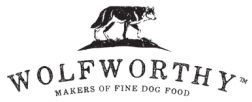
How to Stop Your Dog Having a Dull, Flaky Coat
What you need to know to ensure your dog looks their best
Stroking and patting your dog is one of the loveliest parts of being a dog parent. We love it, they love it and we both benefit from doing it. The enjoyment you receive from this little ritual is brought to a whole new level when your dog’s coat is glossy, shiny and glowing with health. If your dog’s coat has become dull or flaky this could be a sign that your best friend is not as well as they could be.
Healthy inside, Healthy outside
The skin and coat are your dog’s largest organs and are a super indicator as to the overall health of your dog. Because these organs are large they need large amounts of nutrients to maintain them. When these nutrients are lacking, instead of looking shiny and feeling soft your dog’s coat will feel rough and look dull. This is because any nutrients your dog is getting are being sent, understandably, to the vital organs first, leaving the skin and coat last on the list. This is not a situation you want as it can have negative consequences in the long term.
You need to make sure your dog is getting the correct nutrients to enable them to be healthy. Dog fur is made mainly of protein and ensuring your dog has enough protein means their coat will be strong and supported by feeding it the building blocks of the hairs natural structure.
Dogs eating poor quality commercial dog food or even incomplete homemade food may not be getting enough nutrients to support their overall health. Low-fat diets can also be risky, sometimes resulting in Omega-6 deficits.
The Omegas
Many conventional dog foods lack skin and coat nourishing Essential Fatty Acids. Omega-6 and Omega-3 are the Essential Fatty Acids, which improve skin and coat health by supporting the framework from which skin cells are built.
EFA’s have to be eaten, they are not made by the body itself.
Great sources of Omega-3 are Salmon and Salmon Oil. Whereas Omega-6 can be found in eggs, lean meat, organ meat (kidney, heart etc) and fish oil.
Have a look at your dog’s food and check the ingredients. The first ingredient should be meat then check to see if items from the above are also included. Your dog will also benefit from the inclusion of Vitamin E and Zinc.
Dietary supplements are available for dogs but will never be a substitute for a complete and high-quality diet.
If you are planning to adjust or change your dog’s diet, be patient. Hair grows in three stages: anagen, telogen and catagen. Every single strand of your dog’s hair will be at a different stage in its life – you will generally have to wait around 6-8 weeks before seeing improvements in coat and skin. This could be sooner depending on the level of nutrient deficiency in your dog.
Brushing
Feeding a quality diet is the first place to start to ensure a healthy coat and skin but you will also need to allocate a bit of time to grooming. Become familiar with your dog’s coat - all dog’s coats are not the same!
Double coats, such as those of Golden Retrievers, German Shepherds have two coats. - the outer (or guard hairs) and the finer undercoat hairs. Air becomes trapped in the finer hairs and natural oiliness creates water resistance. All double coated dogs shed and during this phase will need a bush out every day. At other times a good weekly top to toe brush will see them well.
Single-coated dogs such as the Yorkshire Terrier or Lhasa Apso generally do not stand the cold as well as the double coated dogs. Some single coated dogs do not shed at all, such as the Poodle. Nevertheless, brushing removes dead hairs that would otherwise matt, when these dead hairs are removed, new ones can grow in. It also allows the skin to breathe.
A regular brushing routine will help you bond with your dog and most dogs (provided you are gentle) will enjoy it.
If you are worried your dog may have a skin condition read our blog on itchy skin here:
https://wolfworthy.co.uk/blogs/word-of-the-wolf/top-5-causes-of-itchy-skin-and-how-to-stop-it
Shampooing
Frequent baths can dry a dog’s coat and skin. Check that any shampoo used on your dog is suitable. Human shampoo (however nice it smells) is not suitable for a dog as the ph level is not right and will irritate the skin. Buy a dog shampoo and make sure you rinse very thoroughly.
If your dog smells after a bath, get them checked by a veterinarian as he may have a bacterial skin infection.
A healthy coat is possible for all dogs but comes down to two things:
-
Feed a quality food, high in protein which includes Omega-3 and Omega-6
-
Establish a brushing routine to remove dead hairs.
Remember - You can’t feed a low-quality food and neglect grooming yet expect your dog to look shiny and glossy
Qty :
Qty :









